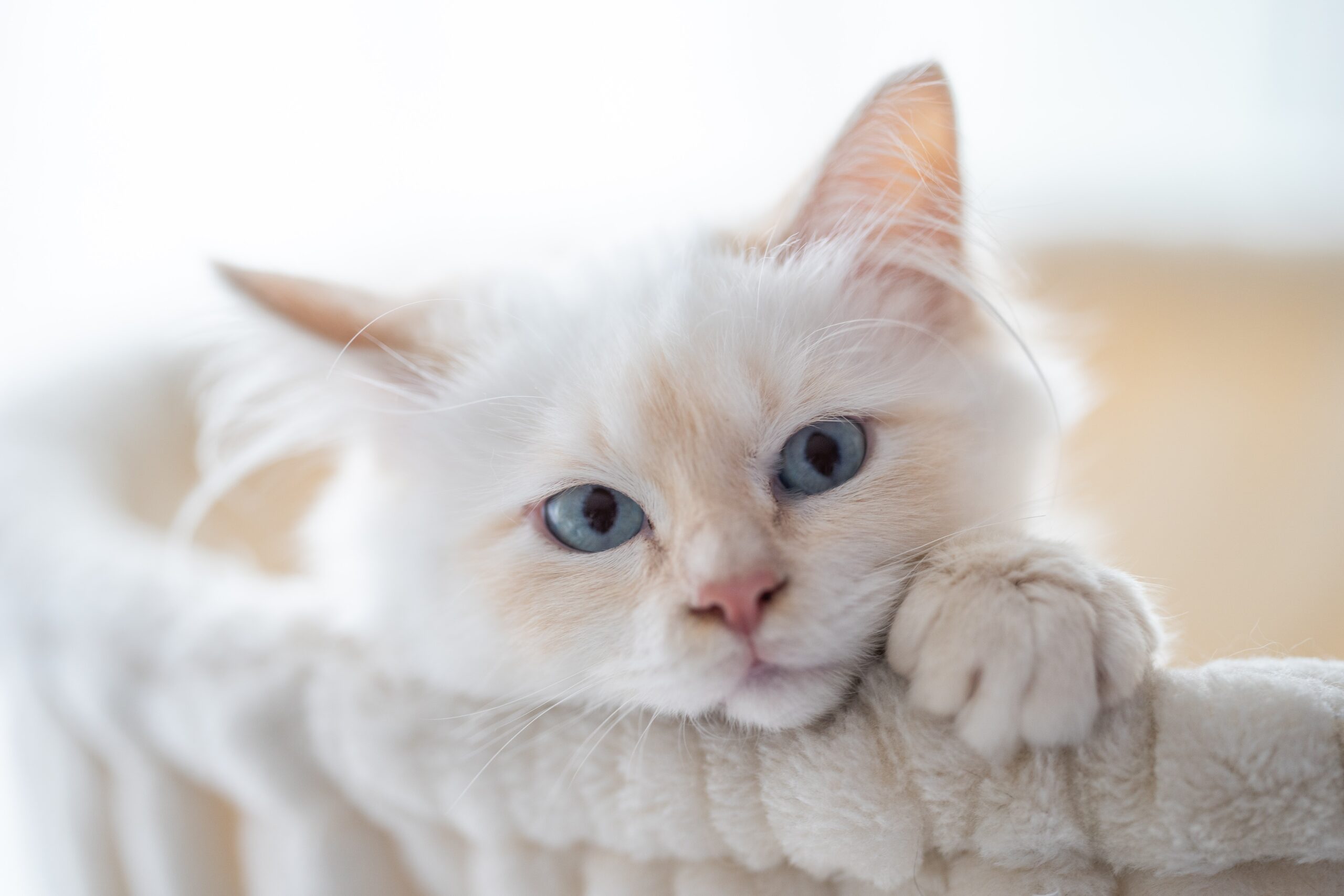Cats are amazing creatures because their characteristics and behaviors are multifunctional, which helps them increase the odds of survival. Scratching for them is marking territories, communicating conflicted feelings, and maintaining their nail health. Their whiskers can feel wind direction and can help them navigate as well. They also purr to show contentment. However, a cat’s purring doesn’t only indicate its happiness. It is an expressive felid vocalization which reflects lots of extremely positive and negative moments of a cat’s life. What are the other reasons why cats purr?
For Survival
Cats begin purring after they are born. Kittens learn to make their characteristic vibrations within a week of birth. It is vital for the survival of newborn kittens. Though they are born deaf and blind, they can feel the vibration, and they are welcomed into the world by the soft vibrations of their mother’s purr. These vibrations are great homing devices which guide newborns to the warmth of their mother’s body as well as to their first meals. Since they can’t meow yet, they show their contentment by purring. The mother cat purrs back comfort and safety.
Cat purring can also prevent predators from finding them. Hungry predators can easily detect cries and other vocalization compared to the vibration of purrs.
Purring also aids mother cats when they give birth. Since they are vulnerable while giving birth, they will not be able to defend themselves. Instead of crying because of pain, they purr instead to prevent attracting danger. Also, purring releases endorphins which helps reduce pain while giving birth.
For Healing
Cats also purr when they are stressed, in pain, or severely ill. A cat’s purr starts on its brain, then a repetitive neuron oscillator sends messages to the laryngeal muscles. This causes the muscles to twitch at a low frequency of 25 to 100 HZ. It causes the vocal chords to separate when a cat inhales and exhales, producing a purr. These frequencies, more than soothing stress, can promote bone healing and it can ease muscle pain as well.
There are also some researchers which show cats heal faster than other animals that do not purr. Purring somehow is the feline equivalent of ultrasound treatments which cost a fortune.
For a Low-Key Exercise
When cats purr, they seem to be having such a wonderful relaxation time. But would you believe that they are in the midst of low-intensity exercise session while they purr? Based on a world-renowned genetics researcher, Dr. Leslie Lyons, the vibrations from purring stimulates the bones and muscles of cats. Therefore, they do not need to extend a lot of effort and energy in exercising.
For Communicating
Cats also purr to communicate, such as when asking humans for food. They can hide their cries in purrs because humans tend to get irritated when they cry. So, to be able to get attention and treats, they purr instead because most cat owners pay attention to their cats when they purr.
They also purr when they are frightened or threatened. An example is when visiting the vet. They communicate their fear through purring.
Roar or Purr
Domestic cats are not the only animals that purr. However, their purrs are unique because they are the only ones who can do it while inhaling and exhaling. Not all members of the Felidae family can purr. For instance, lions, tigers, and leopards roar, but they can’t purr. Big cats who can purr are cheetahs and cougars. Cats that purr can’t roar, and cats that roar can’t purr. This is because the structures surrounding the roaring cats’ larynxes are not stiff enough to purr.
Aside from felines, other animals who can purr are elephants, gorillas, raccoons, rabbits, and hyenas.
Other Benefits
Purring is not just beneficial for cats but for humans as well. Based on research, cats can relieve stress and can lower blood pressure better than other pets. In fact, there was a ten-year study done in Minnesota where it’s found that those who own cats as pets are 40 percent less likely to suffer from heart attacks.
Cats purring can be an auditory stimulus that can be attributed to peacefulness and calmness. So, when cat owners cuddle and stroke them, cats are not the only ones being relaxed, because it also uplifts the mood of humans.
It’s amazing to know that there are lots of meaning behind cats’ purrs, aside from them being happy and contented. The next time you hear your pet cats purr, you may want to check on them as they might want to tell you something.

